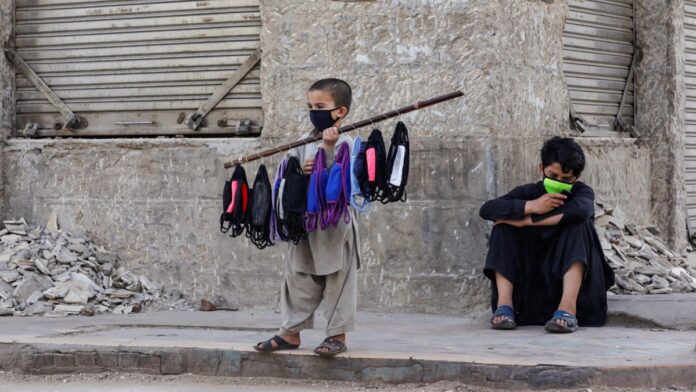–As per estimates, poverty headcount will rise from 24.3pc to a base case of 29pc, and a worst-case scenario of 33.5pc
–At least three million people will lose their jobs – one million in industrial sector and two million in services
ISLAMABAD: Pakistan’s fiscal deficit will be significantly worse than projected this fiscal year, with the fallout from the novel coronavirus pandemic pushing millions into unemployment and poverty, according to government estimates reviewed by Reuters.
Pakistan began a phased lifting of its countrywide lockdown last week despite a rising rate of cases – a move pushed primarily by fears of an economic meltdown. The country has reported 35,788 COVID-19 cases and 770 deaths.
Due to “a shortfall in revenues; re-prioritising of expenditures and increase in public spending,” the post-pandemic fiscal deficit could reach as high as 9.4pc against an earlier projection of 7.4pc, one of the finance ministry documents seen by Reuters said.
Two government officials told Reuters on condition of anonymity that in recent meetings on the financial situation there were fears the deficit could even hit double digits.
That is higher than the previous upper estimate of 9pc predicted by Pakistan’s finance chief Abdul Hafeez Shaikh in a May 9 interview with Reuters.
The impact on workers and poorer people is also stark, with estimates that the poverty headcount will rise from 24.3pc to a base case of 29pc, and a worst-case scenario of 33.5pc, the documents said.
At least three million people will lose their jobs – one million in the industrial sector and two million in services.
The documents noted that Pakistan Institute of Development Economics, an autonomous research organisation set up by the government, has projected job losses could reach 18 million.
Tax collection dropped sharply by 16.4pc in April, the internal estimates showed.
They also stated that exports are likely to fall by $2.8 billion to $3.8 billion, with a negative impact on remittances from the Middle East, USA and Europe, which are likely to remain around $20-21bn against $21.8bn in 2019.
However, a slump in imports will cut Pakistan’s current account deficit to $4.5 billion in the fiscal year, from $13.8 billion in 2019.
The estimates say the economy will contract 1.5pc for financial year 2020 against a rise of 3.29pc in 2019.
Pakistan has already rolled out a 1.24 trillion Pakistani rupee ($7.71 billion) stimulus to support the economy and cash handouts to the poor.
Moody’s on Thursday placed Pakistan’s local and foreign currency long-term issuer B3 ratings under review for downgrade, citing a potential default on private sector debt.
EXTERNAL HELP
Officials say Pakistan is confident of getting at least $5.4 billion in external financial help, including $1.386 billion already received from the IMF as rapid financing to mitigate the corona losses, and a debt rescheduling of $1.8 billion from G20 countries.
That is aside from money expected from the IMF’s three-year $6 billion support programme the country entered last year, according to two officials familiar with the situation.
“Our external finance outlook appears to be very good at the moment,” one of the top officials told Reuters. “Our expectation and our assessment is very positive.”
The officials said Pakistan was receiving $500 million in coronavirus-related support from the Asian Development Bank, and around $1 billion from the World Bank, that will also carry forward another $700 million in projects from last year.
Pakistan has also requested long time ally China to roll over payments related to the power projects set up as part of Belt and Road initiative.
Finance chief Shaikh is to present a budget in two weeks aimed at finding ways to generate revenues and cut expenditures.























